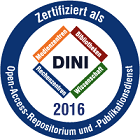Wu, Jingjing: Late-life aging dynamics in C. elegans. - Bonn, 2025. - Dissertation, Rheinische Friedrich-Wilhelms-Universität Bonn.
Online-Ausgabe in bonndoc: https://nbn-resolving.org/urn:nbn:de:hbz:5-83202
Online-Ausgabe in bonndoc: https://nbn-resolving.org/urn:nbn:de:hbz:5-83202
@phdthesis{handle:20.500.11811/13148,
urn: https://nbn-resolving.org/urn:nbn:de:hbz:5-83202,
doi: https://doi.org/10.48565/bonndoc-580,
author = {{Jingjing Wu}},
title = {Late-life aging dynamics in C. elegans},
school = {Rheinische Friedrich-Wilhelms-Universität Bonn},
year = 2025,
month = jun,
note = {Aging is a complex biological process marked by a progressive decline in physiological function, leading to increased vulnerability for diseases and mortality. While early and mid-life aging dynamics are well-characterized, less is known about the physiological changes that occur in late life. This thesis investigates the dynamics of aging in the model organism C. elegans, focusing on whether late life presents a deceleration in age-related changes, akin to the mortality plateau observed in many species. Our aim was to characterize proteomic and transcriptomic changes in C. elegans across the lifespan, including late life, thus contributing to a deeper understanding of the aging process.
Our methods included RNA-seq and mass spectrometry to profile age-sensitive genes (ASGs) and age-sensitive proteins (ASPs). Lifespan assays were used to identify critical periods in the aging trajectory, allowing for targeted sample collection in early, middle, and late life phases.
Our transcriptomic and proteomic analyses identified 3686 ASGs and 658 ASPs, respectively, that were used to study the kinetics of age-dependent phenotypic change across the lifespan in C. elegans. These analyses revealed two distinct phases: an initial period of age-related change, followed by a plateau phase in late life as demonstrated by a stabilization of changes in ASGs and ASPs expression. This late-life phase is also associated with a plateau in mortality rates, suggesting a biological transition where some age-sensitive pathways stabilize or even reverse.
Additionally, we used these datasets to identify genes that feature stability across a range of conditions and that may therefore be useful as reference genes in C. elegans. Our work identified 7 stable reference genes (pmp-3, orc-2, praf-3, aars-2, unc-16, gtf-2F1, and ZK1307.8) that maintain consistent gene expression across various conditions, including multiple age groups (days 6, 8, 12, 14, 18, 20, 24), different mutant strains (WT, age-1, daf-2, isp-1), and a range of temperatures (15°C, 20°C and 25°C), whereas previous studies typically focused on a limited set of time points.
To our knowledge, these findings represent the first study to systematically demonstrate, beyond mere lifespan data, that age-dependent changes follow a dynamic that entails a plateau phase in late life, indicating that aging-associated changes stop progressing and stabilize at advanced ages. Future studies need to address the generality of this finding by incorporating longitudinal analysis approaches and extending the assessments to additional biological systems.},
url = {https://hdl.handle.net/20.500.11811/13148}
}
urn: https://nbn-resolving.org/urn:nbn:de:hbz:5-83202,
doi: https://doi.org/10.48565/bonndoc-580,
author = {{Jingjing Wu}},
title = {Late-life aging dynamics in C. elegans},
school = {Rheinische Friedrich-Wilhelms-Universität Bonn},
year = 2025,
month = jun,
note = {Aging is a complex biological process marked by a progressive decline in physiological function, leading to increased vulnerability for diseases and mortality. While early and mid-life aging dynamics are well-characterized, less is known about the physiological changes that occur in late life. This thesis investigates the dynamics of aging in the model organism C. elegans, focusing on whether late life presents a deceleration in age-related changes, akin to the mortality plateau observed in many species. Our aim was to characterize proteomic and transcriptomic changes in C. elegans across the lifespan, including late life, thus contributing to a deeper understanding of the aging process.
Our methods included RNA-seq and mass spectrometry to profile age-sensitive genes (ASGs) and age-sensitive proteins (ASPs). Lifespan assays were used to identify critical periods in the aging trajectory, allowing for targeted sample collection in early, middle, and late life phases.
Our transcriptomic and proteomic analyses identified 3686 ASGs and 658 ASPs, respectively, that were used to study the kinetics of age-dependent phenotypic change across the lifespan in C. elegans. These analyses revealed two distinct phases: an initial period of age-related change, followed by a plateau phase in late life as demonstrated by a stabilization of changes in ASGs and ASPs expression. This late-life phase is also associated with a plateau in mortality rates, suggesting a biological transition where some age-sensitive pathways stabilize or even reverse.
Additionally, we used these datasets to identify genes that feature stability across a range of conditions and that may therefore be useful as reference genes in C. elegans. Our work identified 7 stable reference genes (pmp-3, orc-2, praf-3, aars-2, unc-16, gtf-2F1, and ZK1307.8) that maintain consistent gene expression across various conditions, including multiple age groups (days 6, 8, 12, 14, 18, 20, 24), different mutant strains (WT, age-1, daf-2, isp-1), and a range of temperatures (15°C, 20°C and 25°C), whereas previous studies typically focused on a limited set of time points.
To our knowledge, these findings represent the first study to systematically demonstrate, beyond mere lifespan data, that age-dependent changes follow a dynamic that entails a plateau phase in late life, indicating that aging-associated changes stop progressing and stabilize at advanced ages. Future studies need to address the generality of this finding by incorporating longitudinal analysis approaches and extending the assessments to additional biological systems.},
url = {https://hdl.handle.net/20.500.11811/13148}
}





